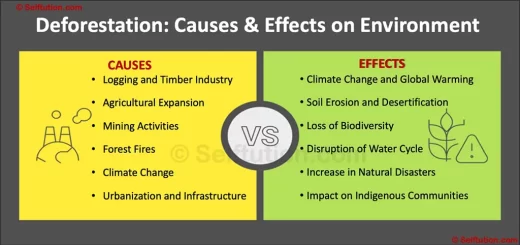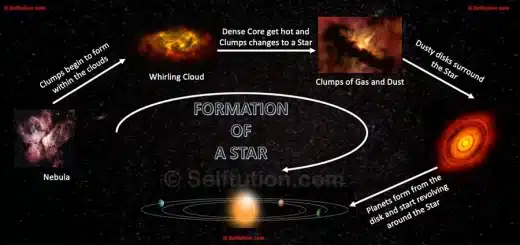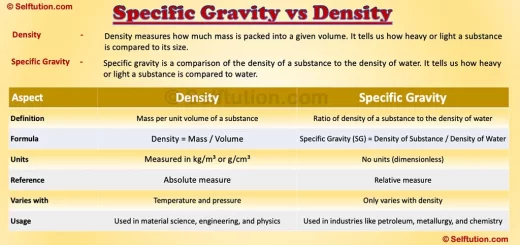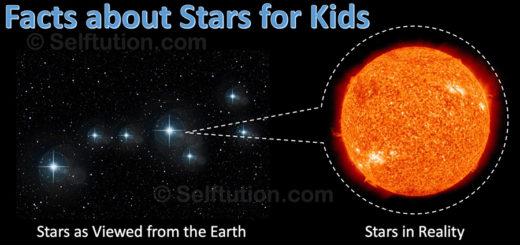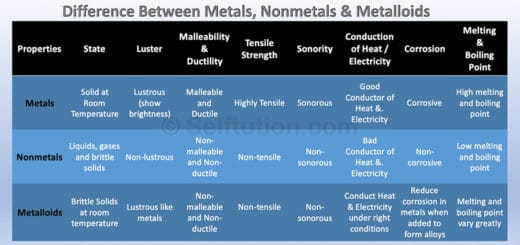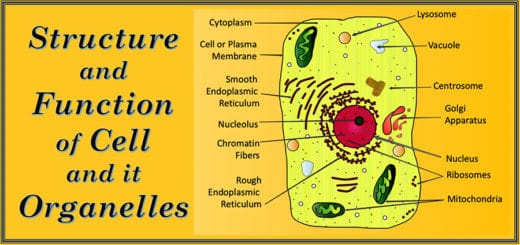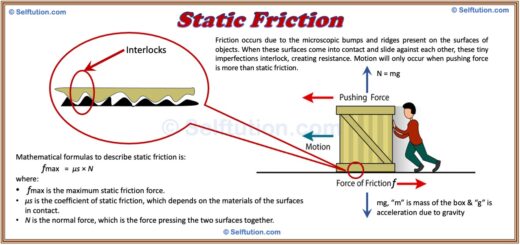Layers of Earth’s Atmosphere: Troposphere to Exosphere
The Earth’s atmosphere comprises several layers with unique characteristics and functions.
- From the ground up, we have the troposphere, where all weather occurs, and we live.
- Above that is the stratosphere, home to the protective ozone layer.
- Next comes the mesosphere, the layer where meteors burn up.
- Above it is the thermosphere, known for its high temperatures and the auroras.
- Finally, the exosphere is the outermost layer, gradually fading into space.
Understanding these layers, from the troposphere to the exosphere, helps us appreciate the complex and dynamic nature of Earth’s atmosphere and its vital role in protecting and sustaining life on our planet.
Layers of Earth’s atmosphere
Before we begin, let’s understand how the various layers of Earth’s atmosphere are stacked.
- Troposphere: The troposphere is the lowest layer of Earth’s atmosphere and extends to about 8-15 kilometers (5-9 miles) above sea level.
- Stratosphere: Above the troposphere is the stratosphere, which stretches from about 15 to 50 kilometers (9 to 31 miles) high.
- Mesosphere: The mesosphere lies above the stratosphere and extends from 50 to 85 kilometers (31 to 53 miles) above Earth.
- Thermosphere: The thermosphere is located above the mesosphere, stretching from about 85 to 600 kilometers (53 to 373 miles) high.
- Exosphere: The exosphere is the outermost layer of Earth’s atmosphere, starting around 600 kilometers (373 miles) and extending to 10,000 kilometers (6,200 miles) into space.
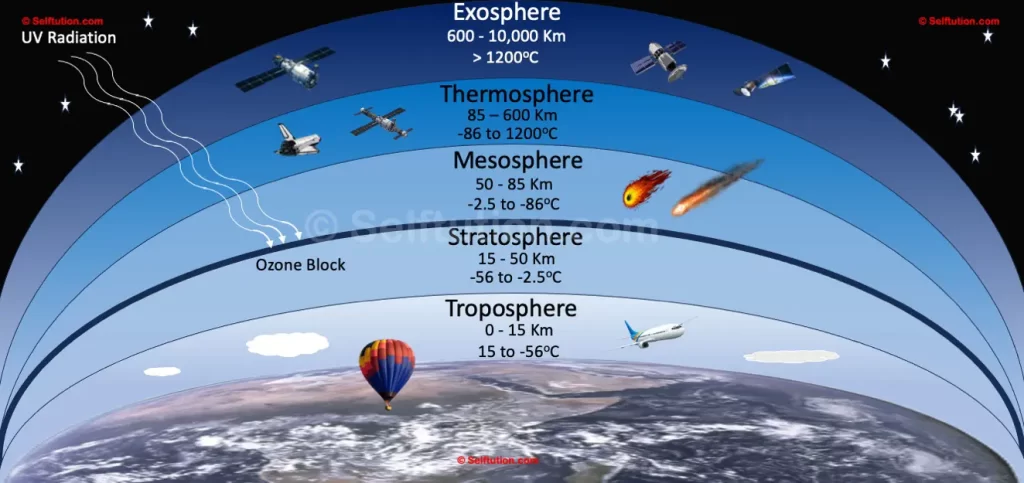
Layers of Earth’s Atmosphere: Troposphere to Exosphere
Troposphere: The Weather Zone
The troposphere is the lowest layer of Earth’s atmosphere, extending from the ground up to about 8 to 15 kilometers (5 to 9 miles) high, depending on your location. It’s the layer where we live and breathe, and it’s where all of Earth’s weather happens, making it the most dynamic part of the atmosphere.
Key Features:
- Temperature: In the troposphere, the temperature decreases with altitude, meaning the higher you go, the colder it gets. This is why mountain tops are much colder than areas at sea level. This temperature drop is why we see snow on mountaintops.
- Weather: Almost all weather phenomena occur in this layer, including rain, snow, storms, and winds. The air in the troposphere is densest compared to other atmospheric layers, containing about 75% of the atmosphere’s total mass and most of its water vapor.
- Airplanes: Commercial airplanes typically fly within the troposphere, at altitudes between 9 and 12 kilometers (30,000 and 40,000 feet). Flying at these altitudes helps aircraft avoid many weather disturbances in the troposphere’s lower parts.
The boundary at the top of the troposphere is called the tropopause, which separates it from the stratosphere. Understanding the troposphere is crucial because it directly affects our weather and climate.
Stratosphere: Home of the Ozone Layer
The stratosphere is the second layer of Earth’s atmosphere, positioned above the troposphere. It spans approximately 15 to 50 kilometers (9 to 31 miles) above the Earth’s surface. This layer is more stable and less turbulent than the troposphere, making it a calmer region of the atmosphere.
Key Features:
- Ozone Layer: One of the most important features of the stratosphere is the ozone layer. This layer absorbs and scatters the sun’s harmful ultraviolet (UV) radiation, protecting living organisms from its damaging effects. Life on Earth relies on the protection provided by the ozone layer to shield against harmful levels of UV radiation.
- Temperature: In the stratosphere, the temperature increases with altitude, unlike in the troposphere where it decreases. This increase in temperature is due to the absorption of UV radiation by the ozone layer, which heats the surrounding air. Because of this temperature profile, the stratosphere is more stratified and less prone to vertical mixing than the troposphere.
- Jet Streams: Near the boundary of the troposphere and stratosphere, powerful jet streams are found. These fast-moving air currents influence weather patterns and are important for aviation routes, helping airplanes to fly more efficiently and avoid turbulence.
Overall, the stratosphere plays a crucial role in protecting life on Earth and maintaining the stability of our planet’s atmosphere. Understanding its functions helps us appreciate its importance in our daily lives and the broader context of Earth’s atmospheric system.
Mesosphere: The Shield Against Meteoroids
The mesosphere is a layer of the Earth’s atmosphere that lies above the stratosphere, from around 50 to 85 kilometers (31 to 53 miles) above the Earth’s surface. This region is less studied due to its challenging accessibility, as it’s too high for aircraft and weather balloons, but too low for satellites to orbit.
Key Features:
- Temperature: One of the key features of the mesosphere is its temperature profile. Unlike the stratosphere below it, where temperatures increase with altitude, the mesosphere experiences a drop in temperature as you go higher. This layer can reach some of the coldest temperatures in the Earth’s atmosphere, plummeting to around -90°C (-130°F).
- Meteoroids: A crucial function of the mesosphere is its role as a protective shield against meteoroids. When these space rocks enter the Earth’s atmosphere, they encounter the mesosphere and burn up due to the intense friction with the air particles. This process creates the bright streaks of light we see as meteors or shooting stars, preventing most meteoroids from reaching the Earth’s surface.
- Low Pressure: The mesosphere has very low air pressure and density. The particles are much more spread out than in the layers below, making the air extremely thin. This low density contributes to this atmospheric layer’s unique conditions and phenomena.
Thermosphere: The Hot Layer
The thermosphere is a layer of Earth’s atmosphere that extends from about 85 kilometers (53 miles) to 600 kilometers (373 miles) above the planet. Known for its extremely high temperatures, the thermosphere plays a crucial role in atmospheric dynamics and space exploration.
Key Features:
- Temperature: In the thermosphere, temperatures can soar up to 2,500°C (4,500°F) or even higher. Despite these extreme temperatures, the air is so thin that it wouldn’t feel hot to humans. This is because the sparse air molecules rarely collide, making heat transfer negligible.
- Auroras: This layer of atmosphere is famous for the auroras, also known as the Northern and Southern Lights. These breathtaking displays occur when charged particles from the sun interact with atoms in the thermosphere, creating vibrant, colorful light shows.
- Space Station: The International Space Station (ISS) orbits within the thermosphere, typically at an altitude of around 400 kilometers (250 miles). This location provides a stable environment for the ISS to conduct various scientific experiments and observations.
- Ionization: The thermosphere is heavily ionized due to intense solar radiation. This ionization leads to the formation of the ionosphere, a sub-layer that reflects and modifies radio waves. This characteristic is essential for long-distance communication, as it helps radio signals travel over vast distances.
Overall, the thermosphere is a vital part of our atmosphere, contributing to both natural phenomena and human technological advancements.
Exosphere: The Edge of Space
The exosphere is the outermost layer of Earth’s atmosphere, blending gradually into the emptiness of space. This layer starts at the top of the thermosphere and extends up to about 10,000 kilometers (6,200 miles) above the Earth. It marks the boundary where our atmosphere meets outer space.
Key Features:
- Composition: The exosphere is composed mainly of hydrogen and helium atoms, with a few traces of other gases. The particles in this layer are extremely sparse and spread out, meaning they seldom collide with each other. This low density gives the exosphere a unique characteristic compared to the more densely packed layers below.
- Boundary: Unlike other atmospheric layers, the exosphere does not have a well-defined upper limit. Instead, it gradually fades away into the vacuum of space, making the transition from atmosphere to outer space a smooth gradient rather than a sharp boundary.
- Satellites: The low-density environment of the exosphere is ideal for satellites orbiting the Earth. With fewer particles to cause friction, satellites can maintain their orbits with minimal resistance. This is why many communication and weather satellites are found in this layer.
- Escape: Some particles in the exosphere move fast enough to overcome Earth’s gravitational pull. These energetic particles can escape into space, contributing to the constant exchange of matter between our planet and outer space.
Overall, the exosphere serves as the final frontier of Earth’s atmosphere, playing a crucial role in satellite operations and the gradual transition into space.
Significance of Layers of Earth’s Atmosphere
The layers of Earth’s atmosphere are crucial for sustaining life and protecting our planet. Firstly, the troposphere, the lowest layer, is where all weather occurs, providing the conditions necessary for life. Above it, the stratosphere houses the ozone layer. This layer absorbs harmful ultraviolet (UV) radiation from the sun, thereby shielding living organisms from its damaging effects. Moreover, the mesosphere, the middle layer, burns up meteors, preventing them from reaching Earth’s surface.
Additionally, the thermosphere absorbs high-energy X-rays and UV radiation, which helps regulate the temperature of the atmosphere. Finally, the exosphere, the outermost layer, gradually transitions into space and is where satellites orbit, enabling global communications and weather forecasting. Together, these layers create a balanced system that not only supports life and protects the planet but also facilitates technological advancements.
Hence, understanding the significance of each atmospheric layer is essential for appreciating their combined role in maintaining Earth’s stability and supporting modern life.
Human Impact on Layers of Earth’s Atmosphere
Human activities have significantly impacted all layers of Earth’s atmosphere, particularly the troposphere and stratosphere. The release of pollutants, greenhouse gases, and chemicals has led to environmental issues such as global warming, ozone layer depletion, and air quality deterioration.
Global Warming: The increase in greenhouse gases like carbon dioxide (CO2) and methane (CH4) has enhanced the greenhouse effect, trapping more heat in the troposphere and leading to a rise in global temperatures. This warming effect has far-reaching consequences, including climate change, melting polar ice, and rising sea levels. These changes disrupt weather patterns, affect agriculture, and threaten biodiversity.
Ozone Depletion: Certain human-made chemicals, particularly chlorofluorocarbons (CFCs), have caused significant thinning of the ozone layer in the stratosphere. This thinning allows more harmful UV radiation to reach the Earth’s surface, increasing the risk of skin cancer, cataracts, and other health issues. Additionally, it affects ecosystems, harming marine life and terrestrial plants that are sensitive to UV radiation.
Air Quality: Pollutants such as sulfur dioxide (SO2), nitrogen oxides (NOx), and particulate matter released from industrial activities, vehicles, and other sources can degrade air quality. Poor air quality leads to respiratory problems, cardiovascular diseases, and other health concerns for humans. It also harms wildlife and damages crops, reducing agricultural productivity.
To summarize, human impact on the atmosphere has created significant environmental and health challenges. Addressing these issues requires global cooperation to reduce emissions, regulate harmful chemicals, and adopt sustainable practices. By doing so, we can protect the atmosphere and ensure a healthier planet for future generations.
Advancements in Atmospheric Science
Advancements in atmospheric science have been significantly boosted by technological innovations and extensive research. Understanding the Earth’s atmospheric layers has become more precise thanks to tools like satellites, weather balloons, and remote sensing technologies.
Satellites: Satellites orbiting Earth offer continuous monitoring of atmospheric conditions. They enable accurate weather forecasting, climate modeling, and tracking of environmental changes. Additionally, satellites support communication, navigation, and Earth observation, making them crucial for both scientific and practical applications.
Weather Balloons: Equipped with sensors, weather balloons are launched into the atmosphere to measure temperature, humidity, pressure, and wind speed at different altitudes. The data collected is essential for understanding atmospheric dynamics and improving weather predictions, helping meteorologists provide more accurate forecasts.
Remote Sensing: Technologies such as radar and lidar allow scientists to study the atmosphere from a distance. These tools offer valuable insights into cloud formation, precipitation patterns, and atmospheric composition, enhancing our ability to predict and understand weather and climate phenomena.
Together, these advancements have revolutionized our understanding of the layers of Earth’s atmosphere, leading to better weather forecasts, improved climate models, and a deeper comprehension of atmospheric processes.
Conclusion
The Earth’s atmosphere, with its distinct layers from the troposphere to the exosphere, is a remarkable system that supports and protects life on our planet. Understanding these layers of Earth’s atmosphere and their functions enhances our appreciation of the delicate balance that sustains life. As we face environmental challenges and explore new frontiers, it is essential to continue research, foster innovation, and promote sustainable practices to ensure the health and longevity of our atmosphere and planet.
